The Games That Defined The Commodore 64
The Commodore 64 is one of the most successful gaming computers ever, and these are the games that helped define it.
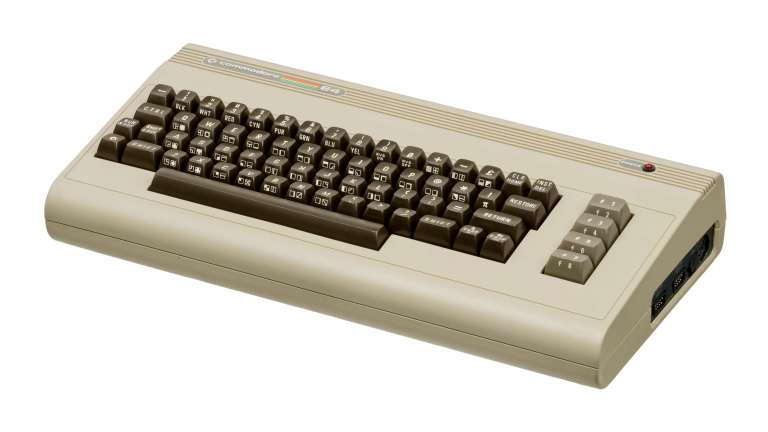
Produced by Commodore International, the Commodore 64 was initially released in 1982. Released among the 3rd generation of gaming consoles, a period known as the 8-bit era, the Commodore 64 also inspired the Commodore 64 Game System. Although the European console was considered a dud, the original Commodore 64 was incredibly popular and still holds a Guinness World Record for being the highest-selling single computer in history.
The Commodore 64 had exclusives, ports, and titles from across other platforms, all contributing to the system’s current reputation. For better or worse these games helped to define the Commodore 64 and shaped its history.

International Soccer (1983)
Developed By Andrew Spencer & Published By Commodore
The Commodore 64 needed a big, popular, and universally beloved title straight out of the gate to help boost sales and create a buzz around its video game potential. International Soccer, which was a C64 exclusive, ticked every box. Not only was the sport globally beloved and instantly recognizable, but the game did a fantastic job of placing fans directly in the action.
While not nearly as advanced as the Fifas of today, the competitive setup and fast-paced gameplay created a party-style atmosphere similar to the arcade experience. Fans wanted to play against their friends and then after getting introduced to the title, those friends decided to buy the game for themselves. The award-winning International Soccer topped the charts again and again, with the title later inspiring spinoffs like International Basketball. Easy to pick up and intuitive to play, the flow and style of a soccer match were captured earnestly through this culturally significant success.

M.U.L.E. (1983)
Developed By Ozark Softscape & Published By Electronic Arts
The C64 was given an early opportunity to showcase its potential with M.U.L.E.: a game that went on to influence a variety of other strategy experiences. The choice of genre made M.U.L.E. a standout compared to the rest of the computer’s lineup, with reviewers loving the nuance of the title and its absence of traditional action gameplay elements. Players were sent to the world of Irata, where they could compete among groups of up to four to grow a prosperous digital colony.
The game wasn’t a C64 exclusive but it did allow the Commodore to start to shape its legacy. M.U.L.E. didn’t sell overly well which indicated that despite the quality of the gameplay, there wasn’t as much interest in this kind of genre style. Nonetheless, it highlighted that the C64’s capabilities and Commodore’s genre interests were varied enough to welcome this unusual project. Without that combination, the strategy genre today might be very different.
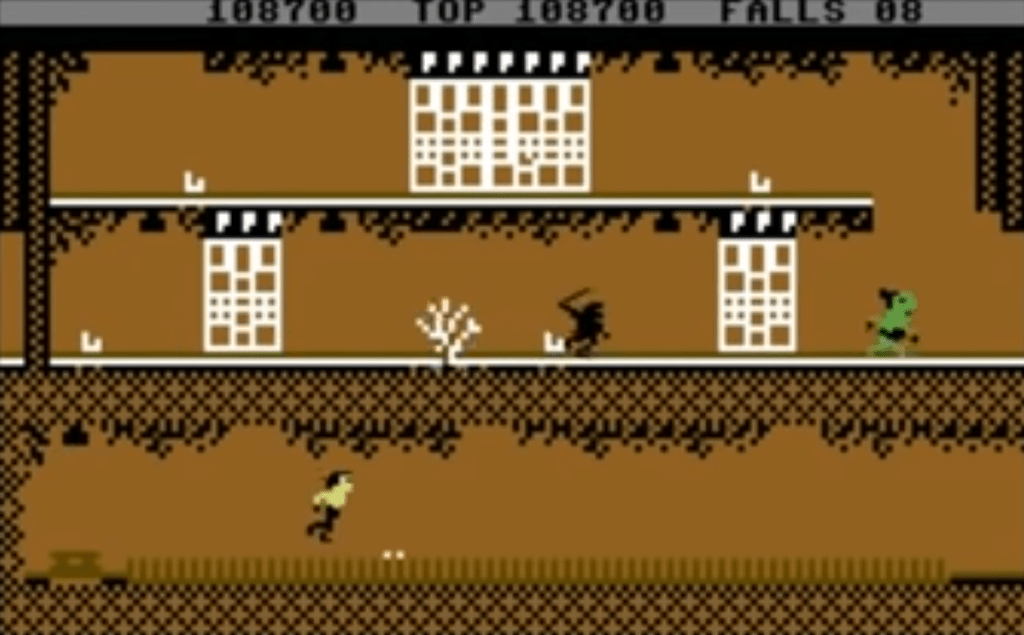
Bruce Lee (1984)
Developed & Published By Datasoft
While multiple C64 games featuring iconic martial arts film stars were released in 1964, Bruce Lee gets the nod over Chuck Norris here. Bruce Lee launched on a massive list of consoles and the C64 was part of that prestigious line-up. The platform game topped the charts worldwide, with the sales indicating that there was more to the title than a simple movie star.
Critically Bruce Lee is still considered among the Commodore 64’s best titles. Players got to step up as the titular hero, throwing fists at a series of armed and dangerous enemies. It might not have been the formula many were expecting, as Lee jumped from platform to platform evading swift kicks and unexpected explosions, but the sheer ambition of the title couldn’t be undervalued. Historically, the title was significant for its use of both platform and beat-em-up genre elements. Fun and frenetic, Bruce Lee demonstrated that the C64 was able to host games that might seem franchise-led, but were crucially still mechanically breaking boundaries.
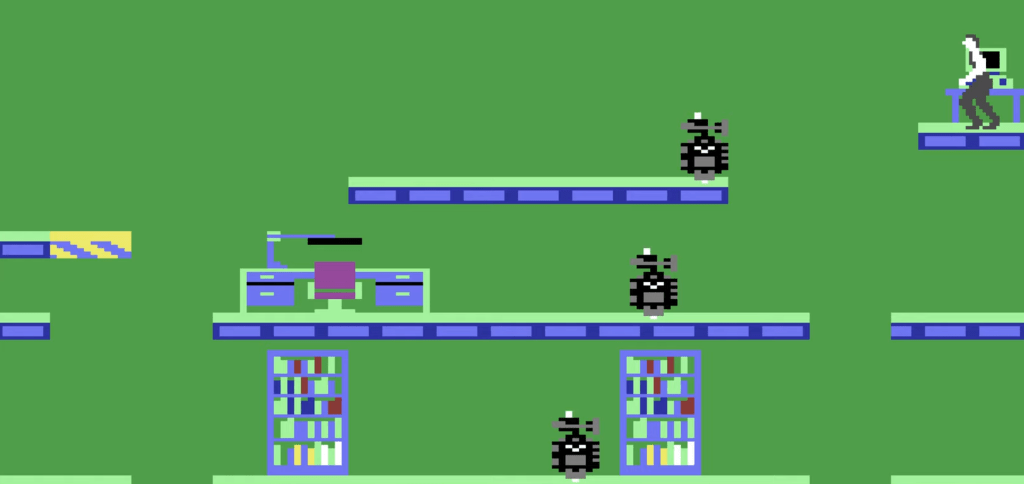
Impossible Mission (1984)
Developed & Published By Epyx
Impossible Mission made it to platforms like the Atari 7800 and BBC Micro but was initially designed for the Commodore 64. The title was crafted to highlight the many capabilities of the C64, with the rare use of digitized speech and a combination of both platform mechanics and adventure elements ensuring that the game genuinely stood out from the competition.
Impossible Mission (which attempted to play on the classic Mission Impossible TV show) pitched the player as a secret agent tasked with taking down an evil scientist. Heralded as one of the best games of its era thanks to the user-friendly controls and imaginative level design, Impossible Mission has become synonymous with the legacy of the C64. A sequel, Impossible Mission II also launched on the C64 in 1988, although it was no longer treated as the core platform for the game by that period.

Wizard (1984)
Developed & Published By PP&S
Wizard is a fascinating title in the C64’s history. The game was developed as a console exclusive and was well-received among those who played it. The fantasy-led platformer could have been a massive franchise considering it boasted a well-balanced array of challenges to overcome and an instant playability. Wizard is still beloved among the Commodore 64’s fan base and maintains its status as an all-time great on the platform.
However, both the sales and long-term viability of Wizard were damaged not by the gameplay itself, but by the competition. Jumpman was released just before Wizard was launched, a title that was also featured on the C64 among other consoles. The issue was, Jumpman stole Wizard’s thunder due to better marketing opportunities and similar genre elements. Perhaps if Wizard had been released at a different time, the end result would have been another legacy builder for the platform. Instead, it is resigned to the archives as a “What if?” story that highlights the depth of the platform’s library. It’s still a great deal of fun to play today, and fans should check out the Wizard Expansion Set which added additional levels to the title.
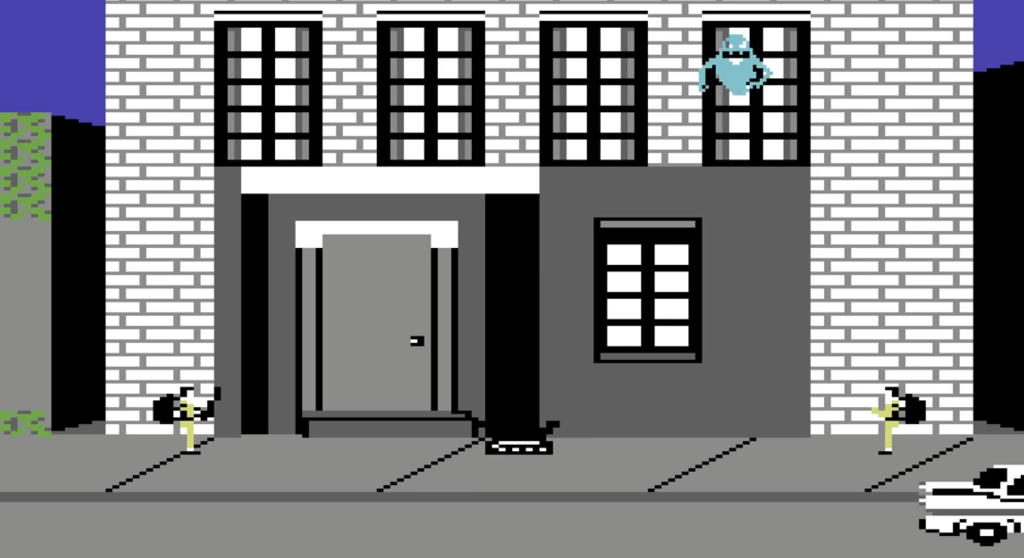
Ghostbusters (1984)
Consoles have long fought for the right to be the exclusive platform for a licensed property. While the 1984 Ghostbusters game might have launched on a variety of platforms, it was initially designed for the C64. It was a major market move for Commodore and spoke to the mass appeal of the platform at that time. The reception to the game was positive at the time (if largely negative now), but this is a case where sales outshine the critical response.
Ghostbusters showed the Commodore 64 could be trusted as a major player that could support a likely blockbuster. While the C64 edition of this title (and other ports) has been criticized in hindsight due to how poorly it has aged, the title was defining in other ways for the Commodore. The fact it still generates such strong opinions speaks to its impact.

Pitstop II (1984)
Developed & Published Epyx
It’s clear at this stage that the mid-80s was the heyday for the Commodore 64. The sheer range of titles available during that time highlighted how capable the platform was at jumping between genres and styles. Pitstop II is a fantastic example of that trend, with the racing game hitting major consoles including the C64 in its first wave and instantly defining the 3D format within the vehicular genre.
Pitstop II controlled well, looked great for the period, and helped to shape the other racing titles that came after its release. The Commodore 64 could hold the game up as an example of its continued status within the industry and that despite some missteps, could act as a host for ambitious alternative games. The relative smoothness of the gameplay on the C64 meant that players could rely on the platform for future similar experiences. Benefitting from the competitive element, Pitstop II was also popular because it pitted players against one another, once again showing the arcade atmosphere could be created in the home via a split screen.

Paradroid (1985)
Developed By Graftgold & Published By Hewson Consultants
Looking across the C64’s archives, certain titles stand out as legacy-defining because of their sheer quality and long-term reputation. Paradroid is most certainly one of those titles. This beloved part of the C64 library later became a staple in C64 re-releases on consoles like the Wii. Initially designed for Commodore, the shoot-em-up was popular enough to later make its way to platforms like the Atari ST. Boasting puzzle elements as well, Paradroid balanced genres well, to craft an unusual gaming experience.
The title asks players to battle against an invading robot army, either by shooting them down or by hacking them and taking control. The mechanics were varied enough to boast real replayability and although visually this was a very simple title, Paradroid was still well-received among critics and players alike. Paradroid is ultimately one of the absolute classics that highlights the C64’s history of supporting games that would leave a lasting impression on the industry.
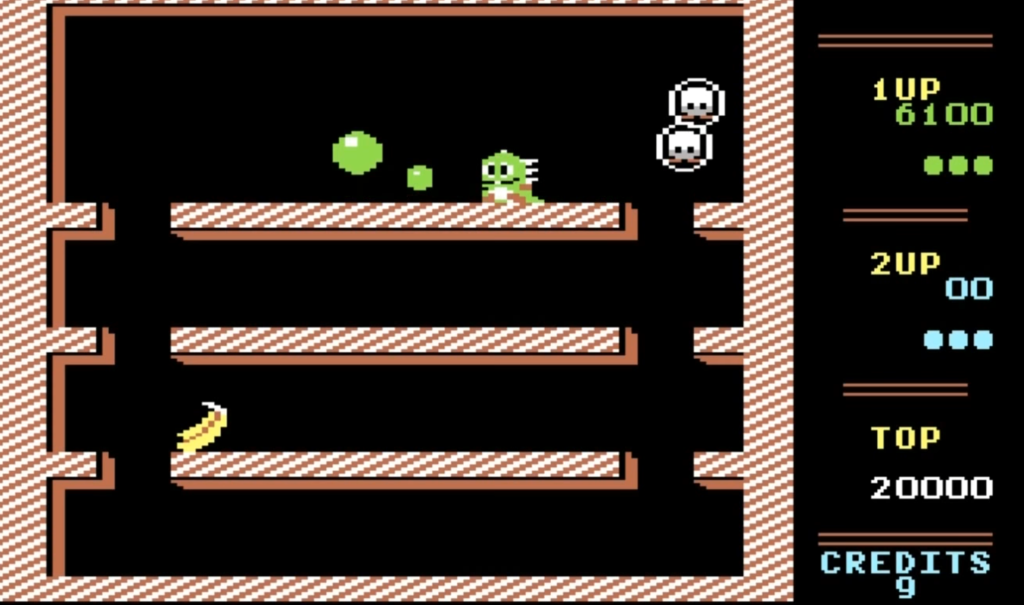
Bubble Bobble (1987)
Developed by Taito & Published By Software Creations
Bubble Bobble may not be a big name today, but it was a huge C64 game at the time of its launch. The platformer was designed with couples in mind and was created as a cooperative arcade experience. The game featured memorable characters Bub and Bob, who had been transformed into bubble dragons and had to navigate the Cave of Monsters to save their significant others. It was a ridiculous premise, which was strengthened by chaotic gameplay mechanics, a whimsical soundtrack, and quality graphics.
Crafting ports of arcade games is always difficult, as it’s hard to get that same feeling from a home console variation. However, the incredibly successful Bubble Bobble did make its way to the Commodore 64 and was still positively received in this new format. At a changing time for the industry, Bubble Bobble demonstrated that the now-aging platform could still produce compelling adaptations of emerging arcade favorites.
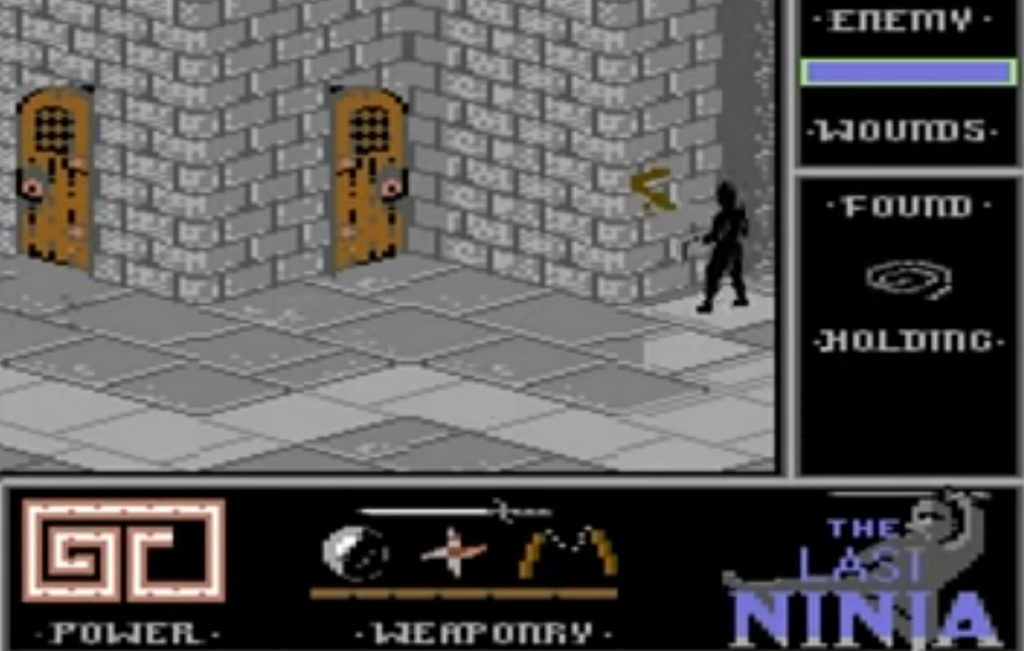
The Last Ninja (1987)
Developed By System 3 & Published By Activision
At this stage in Commodore’s timeline, we saw a significant increase in the development of titles specifically intended for the C64. If they were popular, they could then be adapted to other consoles, thus boosting the brand name. The Last Ninja followed this formula, with the game designed for the C64 and eventually joining the competition. The Last Ninja holds plenty of commercial accolades as a best-seller for the C64 and is fondly remembered as one of the platform’s greatest experiences.
The Last Ninja 2 and 3 were developed soon after the original’s success and showed that this was a heavy-hitting franchise that could carry the C64 into the future. Its acclaim was hugely influenced by the freshness of the game’s design. Players navigated through indoor and outdoor environments across feudal Japan in the action-adventure title, utilizing the skills of the titular ninja to strike down the enemy. A gorgeous score and beautiful backdrops highlighted the love that had been put into The Last Ninja.

Wizball (1987)
Developed By Sensible Software & Ocean Software
The Commodore 64’s run as a juggernaut of its era continued with the release of Wizball. The scrolling shooter was originally developed for the C64 and then was later added to consoles like the ZX Spectrum and Atari ST. It was a game known for its creative use of the C64’s abilities, making the most of the computer’s sound, visuals, and mechanical potential. Although the title might have played like a dream and looked just as stunning, the sales weren’t quite what Commodore might have hoped for.
Regardless, Wizball was a strong enough concept to inspire a sequel titled Wizkid. Released in 1992, the game simply came out too late to really benefit from its predecessor’s reputation, showing how quickly everything changed for the Commodore around that time. Wizball is still a defining title for the C64 though, as a game that tested the platform’s limits and gave the system a much-needed share of the spotlight amidst a legendary run.

Mayhem In Monsterland (1993)
Developed & Published By Apex Computer Productions
Mayhem In Monsterland was crafted as an exclusive for the Commodore 64 released at the end of the platform’s market lifespan. At this stage, a lot of players had moved on to the competition, but Commodore was hopeful that a quality crafted game would still interest loyal consumers. Mayhem In Monsterland lived up to its potential. The platformer, which followed a heroic dinosaur determined to restore the magic to Monsterland, was brimming with charm and enthusiasm.
It didn’t break the mold in any capacity, but it was a solid single-player adventure piece, which performed well across Europe where the C64 was still maintaining its aura. Looking back, Mayhem In Monsterland would have become much more iconic had it been released earlier, but this was an example of too little too late. Regardless, the game’s nostalgia was enough to eventually inspire a version on the Wii released across Europe, reigniting the passion for Mayhem’s magical journey. Even toward its dying days, Commodore was still throwing out bold concepts.
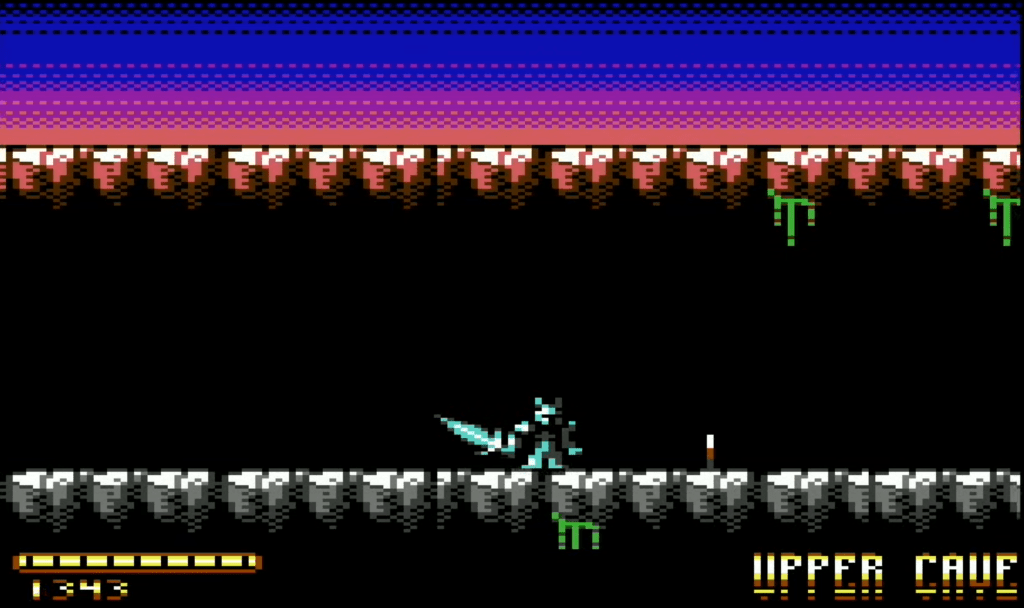
Knight ‘n’ Grail (2009)
Developed By Wide Pixel Games & Published By Psytronik Software
Knight ‘n’ Grail’s very existence is a nod toward the cult status that the Commdore 64 still holds in Europe. The title, which was developed by a Swedish studio, was bizarrely launched in 2009, years after the Commodore’s influence had been pretty much extinguished. What’s more, the title was genuinely great and a brilliant display of the capabilities of the platform, combined with a slightly more modern approach to game development.
Although the title was limited by the C64 itself, from the visuals to the sound design, everything was polished flawlessly. The title follows a knight who must rescue his loved one from the perils of the platformer’s complex levels. Gloriously retro and endlessly compelling, Knight ‘n’ Grail could have been a true icon for a different era, but it’s strange release meant that it acted more like a final hurrah for a platform that had given so many people so many great memories.
